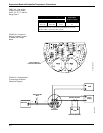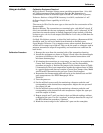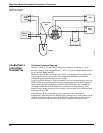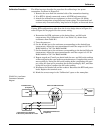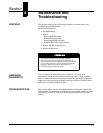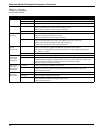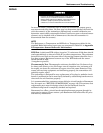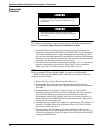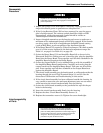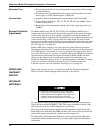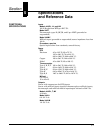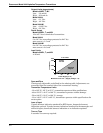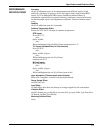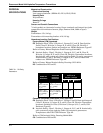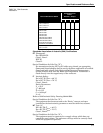
Rosemount Model 444 Alphaline Temperature Transmitters
4-4
Disassembly
Procedure
NOTE
The numbers in parentheses refer to parts shown in the Illustrated Parts List,
Table 5-7, in Section 5 Specifications and Reference Data.
1. Terminal blocks for making all field wiring electrical connections are
located in a compartment identified as “Terminal Side” on the nameplate.
The sensor terminals, power supply and signal-test terminals, as well as
the zero and span adjustments are accessible by removing the Electronics
Housing Cover (2) from the terminal side. The terminals are permanently
attached to the housing and must not be removed.
2. The transmitter electronics Circuit Board Assembly (5, 6, 7) is located in a
separate compartment, identified as “Circuit Side” on the nameplate.
Make sure power is off. Then remove Circuit Side Cover (2).
NOTE
On the standard RTD input (Model 444RL), fast turn-on (Model 444RL
___B0912), and low-power (Models 444LL and LM) units, boards 5 and 6 are
integrated into one board.
3. Remove the three Circuit Board Assembly Screws (4).
4. Push equally on the zero and span adjustment pot shafts from the
terminal side. This will allow you to grasp and remove the Circuit Board
Assembly.
5. If troubleshooting is required, it is best to keep the Circuit Board
Assembly together for initial evaluation. Otherwise, the board assembly
may be disassembled by grasping the Output Board (5) around its
circumference and pulling it gently and evenly away from the other two
boards. Remove the Amplifier Board (6) in the same manner. Take care not
to bend the interconnection pins.
6. The adjustment pot shafts are sealed by two small O-rings (1D). Remove, if
necessary, by taking off the O-ring Retainer Plate (1B), which is held in
place by two small screws (1C).
7. The Nameplate (1E), Hazardous Service Certification Label (9), and
Instrument Tag (8) are held in place with Drive Screws (1F). Remove any
of these by gripping the head of the Drive Screw with pliers and carefully
turning counter-clockwise.
Explosion can cause death or serious injury. Do not remove
the instrument cover in explosive atmospheres when the
circuit is alive.
High voltage that may be present on leads can cause
electrical shock. Make sure all power to the transmitter is off
before wiring.



